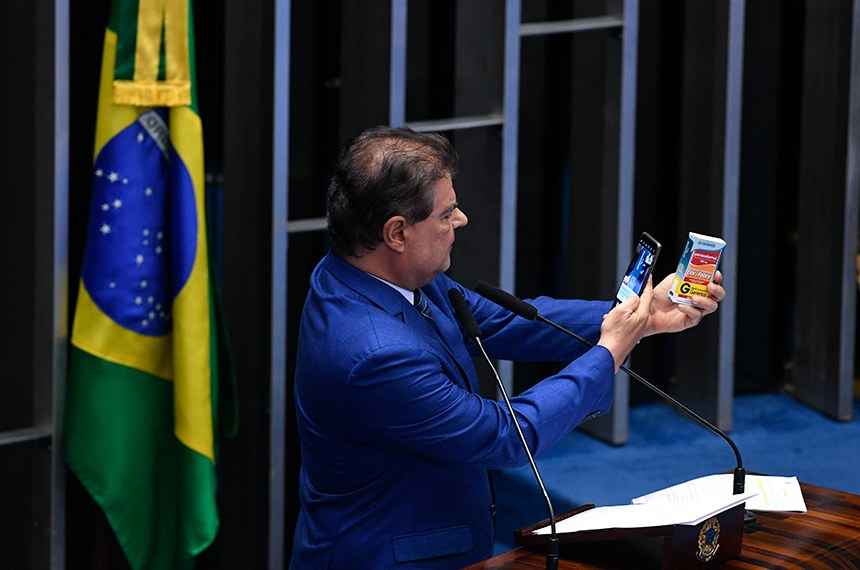Brazil passes law that allows the use of digital leaflets for medicines
Deep drive into the use of eLeaflets in Brazil
On the 11th May 2022 President Jair Bolsonaro sanctioned the House of Representatives bill that requires pharmaceutical companies to insert a QR Code on medication packages to access a digital package insert.
The project was transformed into Law 14.338/22, published on the 12th edition of the Federal Official Gazette. The law originates from a proposal PL 3846/21 by deputy André Fufuca (PP-MA), approved by the Chamber and the Senate.

Justification for the law proposal
Documents are increasingly being used in digital format, accessible by reading, usually via smartphone, a “QR code”, a two-dimensional bar code that gives access to a virtual address with that document. Many restaurants, for example, already adopt this agile instrument to display their menus, at the same time saving materials and offering cards that can be updated in real time, changing, for example, prices that need to be readjusted or omitting items that are not available.
The potential of this resource is still far from being fully explored, but it is easy to understand its potential in regards to, for example, medication leaflets.
Today, drug leaflets usually contain extensive information on the pharmacodynamic and pharmacokinetic properties of drugs, their expected effects, all their possible side effects, dosage for different indications and age groups, etc. This amount of information that must be compressed into a small sheet of paper, resulting in documents with small print that are difficult to read and discourage the user from adequately informing himself/herself about the medication he/she is taking, sometimes with very negative consequences for their health.
The adoption of the digital leaflet, which this project is about, will bring several benefits. Firstly, the text does not have to adapt to any space restrictions, can be designed for optimal readability and visualization with the use of illustrations when necessary, digital leaflets also offer the possibility of transforming text into audio for the visually impaired and illiterate and even inserting links to other documents explaining terms and concepts that deserve further clarification. In addition, they can be updated, according to new scientific and practical evidence on medicines, instantly and at zero cost, which also applies to any inaccuracies that may be detected in the texts.
In the medium and long term, as the population gets used to using the digital leaflet, other advantages will become evident: the paper leaflet will eventually become unnecessary, allowing the elimination of a cost factor for medicines thus lowering their final price. In addition, there will be a considerable reduction in the consumption of paper and ink, the accumulation of solid waste and environmental pollution. According to data from the National Health Surveillance Agency - Anvisa, in 2020, more than 374 million drug presentations were marketed in Brazil, in box or vial.
In other words, more than 374 million package inserts, which consumed a corresponding number of sheets of paper and an expressive volume of ink, were discarded, of which only a small portion will have been recycled with the rest going to landfills or dumps. This alone would be an eloquent argument in favor of the digital leaflet, which, for all the above reasons, should begin to be adopted in Brazil as soon as possible.
Highlights of the law
-
The packages of all registered medicines will receive specific identification based on a system of capture, storage and electronic transmission of data, containing at least the following information: .... QR two-dimensional bar code that leads to an internet address that gives access to the digital package insert of the drug in question.
This means that all packages will need to have a QR code leading to the digital leaflet for that product, this will be compulsory item to be present on the package
-
The digital leaflets must be hosted on links authorized by the competent federal health surveillance agency
This is an excellent addition so that only qualified players that can satisfy quality requirements will be able to offer this service via their platforms.
-
The inclusion of information in digital format by the competent federal health surveillance agency or by the holder of the product registration in a single format will not replace the need for its presentation also in printed package insert format, with all the necessary information in accordance with the agency's regulations, observing identical content available digitally, including in relation to accessibility standards for people with disabilities.
By default the availability of the digital leaflet cannot replace the paper insert and the content of the 2 must be identical, we are not sure how updates will be handled as digital leaflets and paper leaflets updates have very different timeframes, clarification from the Regulatory Authorithy will be needed on this.
-
The health authority will be able to define which medicines will have only one package insert format.
-
The digital leaflet referred to above in this article shall have, at least, the following characteristics:
- complete and updated content, identical to the printed package insert;
- format that facilitates reading and understanding;
- possibility of converting text into audio and/or video by using an appropriate application.
This requirement opens up to the use of multimedia elements that can improve user comprehensions and remove knowledge barriers for visually impaired people. The eLeaflet solution from myHealthbox supports natively the use of multimedia elements (video, audio, images) and the use of display templates that improve text readability and navigation.

- After the conclusion of the regulation of the provisions of the caput of this article, the other stages of the system must be implemented within 12 (twelve) months.
The deadline for implementing these solutions is going to be May 2023
Take home messages
According to the new law, the digital package inserts must be hosted on links authorized by Anvisa, and the laboratory may insert other information, in addition to the complete and updated content, identical to the printed package insert.
The printed leaflet is still required and cannot be dispensed with, but the National Health Surveillance Agency (Anvisa) may define which drugs will have only one leaflet format opening the path to the use of digital-only information leaflets.
Solutions are already available for all pharmaceutical companies that want to start using QR-code enabled digital leaflets (eLeaflets) with their products, more information can be found on the eLeaflet website